No products in the cart.
NEWS
Cultivating Culinary Bliss: Expert Tips for Growing Delicious Tomatoes
My journey into the world of gardening began long before I ever donned a chef’s apron. It was watching my grandparents tend their garden beds, nurturing tiny seeds into vibrant plants, and finally harvesting the bounty, that first ignited my passion for fresh, homegrown vegetables. Tomatoes, with their incredible sweetness and versatility, quickly became a favorite. Unlike some children who shied away from garden greens, I eagerly embraced the flavors straight from the soil.
Over the years, learning the secrets of how to grow tomatoes became a dedicated pursuit. There have certainly been seasons of trial and error, successes and learning opportunities, but through it all, I’ve gained invaluable knowledge. Now, I approach each planting season with confidence, anticipating a generous harvest of beautiful, flavorful fruit. Sharing this experience and the lessons I’ve learned is part of what I love about contributing content to Biogarden.Asia, where we celebrate the connection between the garden and the table. Mastering the art of growing delicious tomatoes is achievable for anyone with a little patience and the right approach.
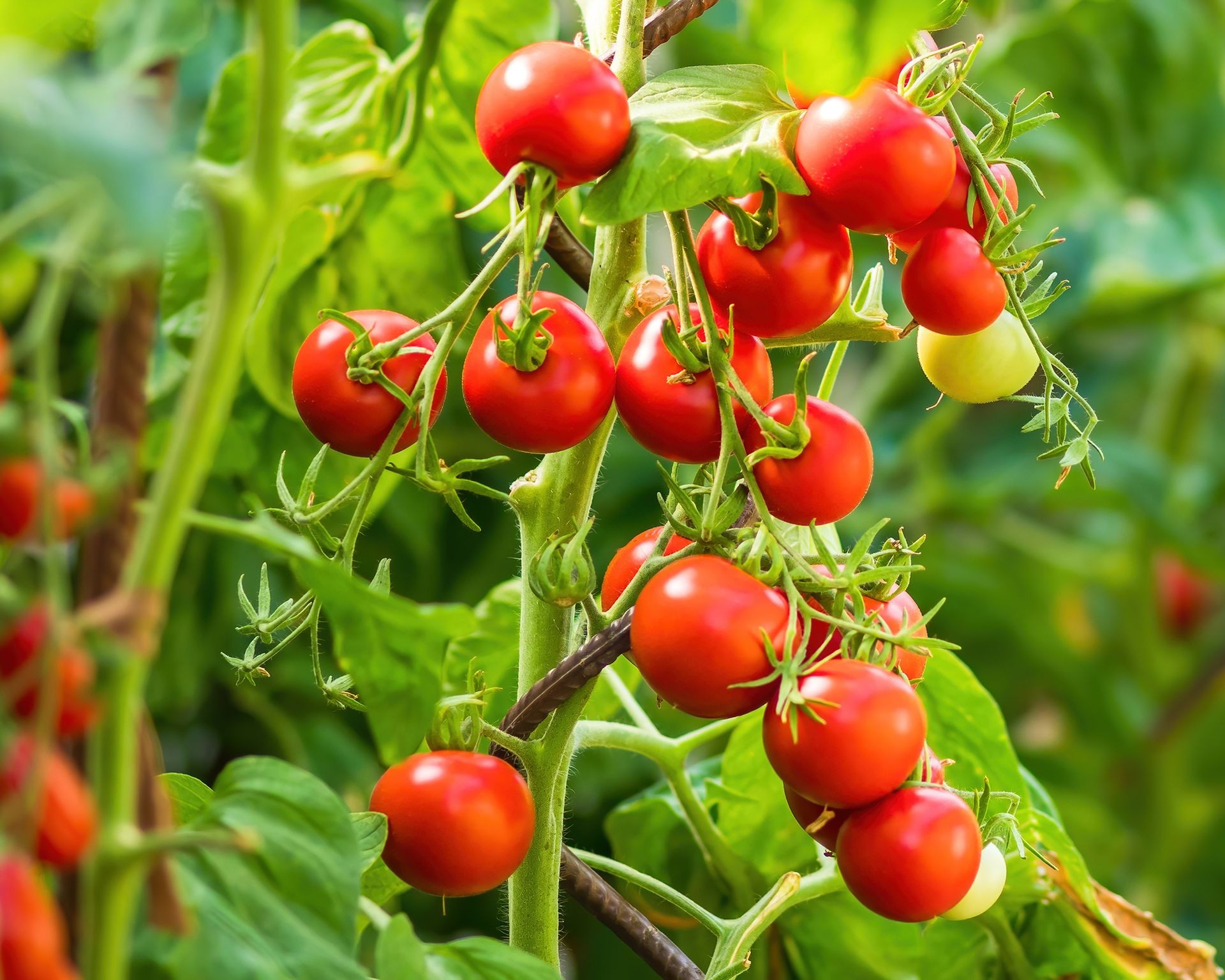 Close-up view of ripe red cherry tomatoes hanging on the vine, ready for harvest
Close-up view of ripe red cherry tomatoes hanging on the vine, ready for harvest
Choosing the Right Tomato Varieties for Your Needs
As a food enthusiast, I know that the flavor and texture of a tomato can dramatically impact a dish. Selecting the right variety is absolutely fundamental to growing delicious tomatoes, especially if you have specific culinary goals in mind.
For rich, homemade sauces, nothing quite compares to the fleshy, lower-moisture content of paste tomatoes. Varieties like San Marzano and Roma are classic choices. San Marzano, often considered the gold standard for canning and sauces, produces a concentrated flavor that’s hard to beat. My early experiences growing San Marzano in a container on my patio, bathed in sunlight and nurtured with quality soil, taught me the abundance this single variety can yield – so much that I learned to can to preserve the harvest! While some varieties can be tricky to find, saving seeds and starting them indoors ensures a supply. Roma tomatoes are another excellent paste type, equally superb for sauces but also delightful eaten fresh, perhaps sliced with fresh mozzarella and basil, drizzled with olive oil.
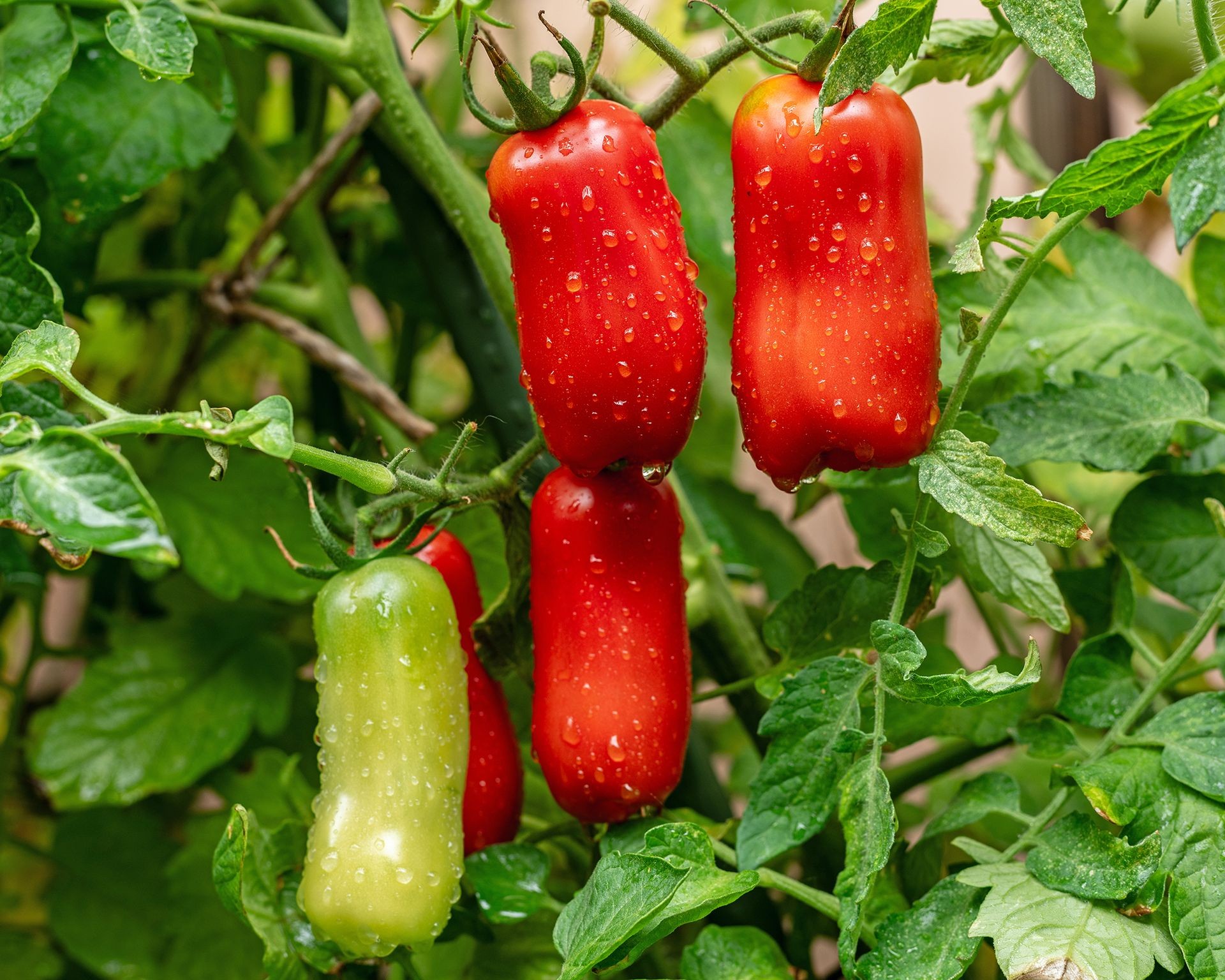 Cluster of elongated San Marzano tomatoes ripening on the plant, ideal for making rich sauces
Cluster of elongated San Marzano tomatoes ripening on the plant, ideal for making rich sauces
Beyond sauces, you’ll want slicing tomatoes for sandwiches and salads. For gardeners in regions with shorter growing seasons, dependable earlier varieties are a lifesaver. And for those who love exploring diverse tastes and colors, heirloom tomatoes offer a fascinating world of unique flavors and histories. Think about how you plan to use your tomatoes when making your selection – this will guide you to the most rewarding choices for your garden and your kitchen.
Turning Kitchen Scraps into Garden Gold
Minimizing waste is a core principle in my kitchen and my garden. This is where composting becomes invaluable. Transforming kitchen scraps and garden debris into nutrient-rich compost provides the perfect amendment for supporting hungry plants like tomatoes.
I maintain both simple compost heaps for bulk garden waste and a compost tumbler for quicker processing of kitchen trimmings. The tumbler is a fantastic source for rapidly creating ‘black gold’ – the dark, crumbly compost that significantly improves soil structure. I’ve seen firsthand the difference healthy soil makes; attempting to grow tomatoes in poor, unamended ground resulted in disappointing yields. Now, I always incorporate a generous amount of tumbler compost, often mixed with leaf litter and other organic materials, before planting. This enriches the soil, providing essential nutrients and improving drainage (preventing “wet feet”) while also helping the soil retain necessary moisture during dry spells.
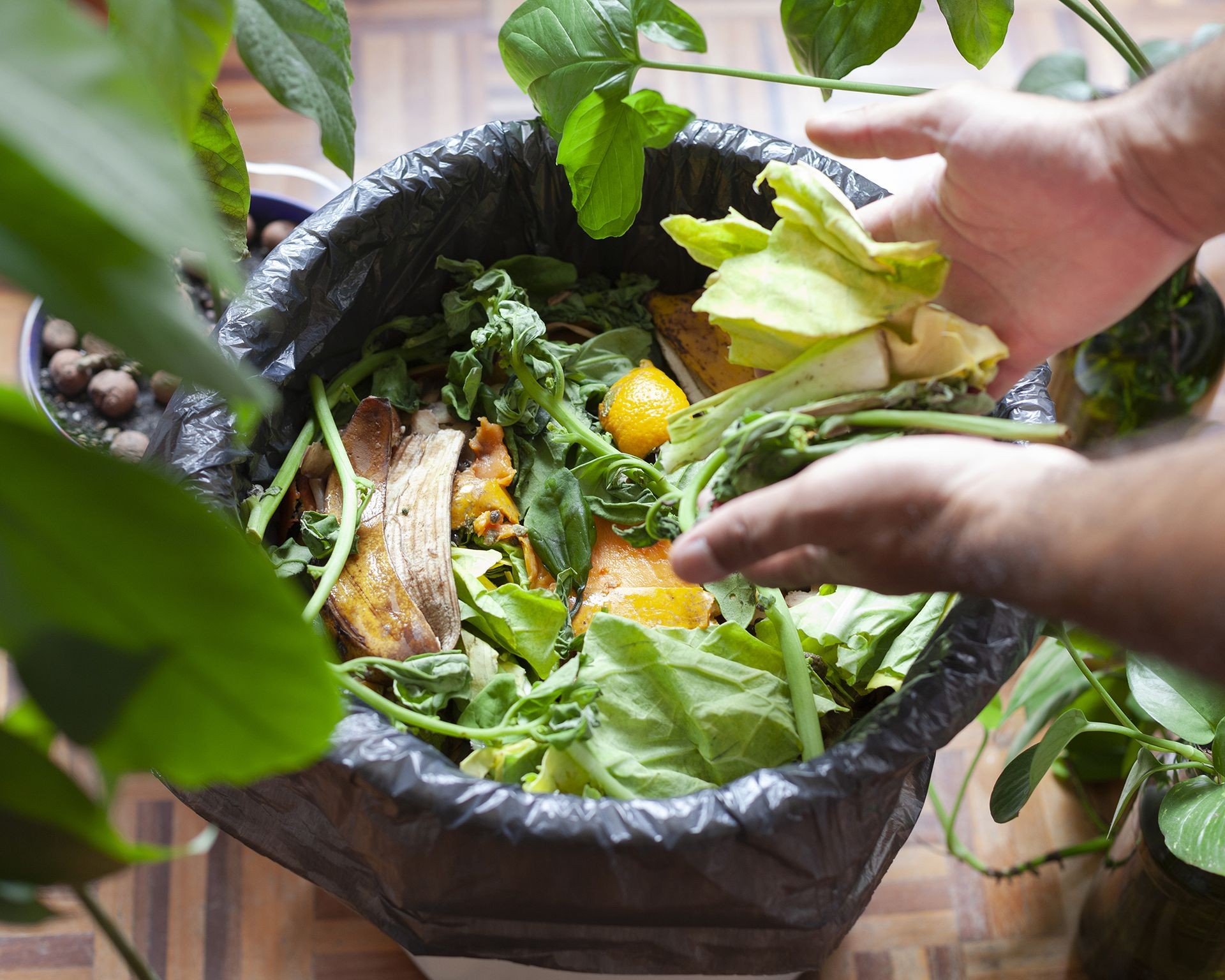 Kitchen scraps like fruit peels and vegetable trimmings being added to a compost pile, highlighting the value of organic waste
Kitchen scraps like fruit peels and vegetable trimmings being added to a compost pile, highlighting the value of organic waste
While manure can be a powerful soil builder, caution is essential. I once used what I thought was free, readily available manure, only to discover it contained residues from broadleaf herbicides. This was devastating for my tomato and pepper plants, stunting their growth and preventing fruit production. If you choose to use manure, ensure it comes from a clean, herbicide-free source to protect your precious vegetables. Healthy soil, built from organic matter, lays the foundation for robust plant growth and abundant fruit.
The Art of Consistent Watering and Targeted Feeding
Just like any living being, tomato plants require consistent nourishment to thrive and produce fruit generously. Proper watering and strategic feeding are non-negotiable elements for growing delicious tomatoes.
Watering is best done deeply and consistently, ideally in the morning. The goal is to moisten the soil, not the leaves, which can help prevent fungal diseases. Depending on the weather, especially during hot summer peaks, daily watering might be necessary, sometimes even twice on scorching days. However, overwatering is a common mistake that can lead to cracked fruit. I always check the top inch of soil – if it’s dry, it’s time to water; if it’s still moist, I wait.
Tomato plants are heavy feeders, demanding nutrients throughout their growing cycle. As an organic gardener, I avoid synthetic fertilizers, preferring natural amendments. I typically work some bonemeal into the soil around young transplants about a month after they’ve settled in, providing phosphorus for root development.
When the plants begin to flower and set fruit, they benefit from an extra boost of potassium. This is where homemade fertilizers come in handy. I utilize dried banana peels, which are a good source of potassium, pulsing them into a powder to mix into the soil around the base of the plants. As fruits start to form, I’ve also found success incorporating Epsom salts (magnesium sulfate) into the soil – while debated by some, I believe it contributes to healthier plants. Additionally, scattering crushed eggshells around the root zone is a traditional method aimed at preventing blossom end rot, a common issue caused by calcium deficiency.
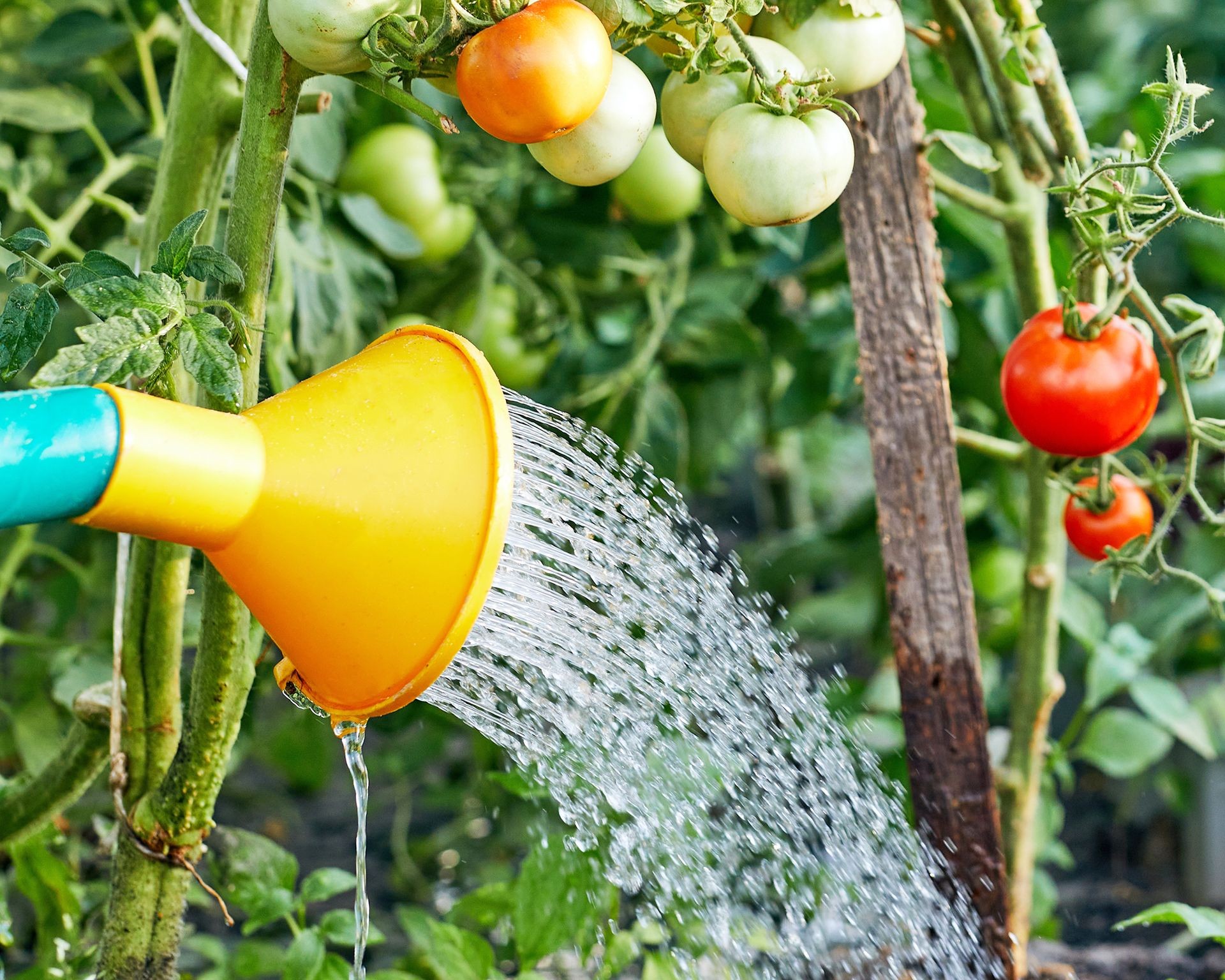 Hand holding a watering can, carefully watering the soil around the base of a healthy tomato plant to encourage deep root growth
Hand holding a watering can, carefully watering the soil around the base of a healthy tomato plant to encourage deep root growth
Timing Your Harvest for Peak Flavor
Knowing exactly when to pick your tomatoes is crucial for experiencing their full, delicious potential. I wait until the fruit has developed its characteristic vibrant color and feels plump and firm. While tomatoes can continue to ripen after being picked, the absolute best flavor is achieved when they ripen fully on the vine.
My determinate tomato varieties, which tend to produce most of their fruit over a shorter period, are often used fresh right away. Indeterminate types, which produce fruit continuously throughout the season, provide a steady supply.
Once harvested, I never refrigerate my tomatoes. The cold temperature diminishes their flavor and alters their texture. They are best kept on the kitchen counter and used relatively quickly before they become too soft.
When the plants are prolific and yield more than can be consumed fresh, preserving the harvest becomes essential. Canning diced tomatoes and sauce is a favorite method, allowing me to enjoy garden flavor year-round. I also dehydrate slices for future use and freeze sauce in batches. Sharing the abundance with friends, family, or local food banks is another wonderful way to ensure the delicious fruit doesn’t go to waste. With a bit of planning and effort, the taste of your homegrown tomatoes can last long after the growing season ends.
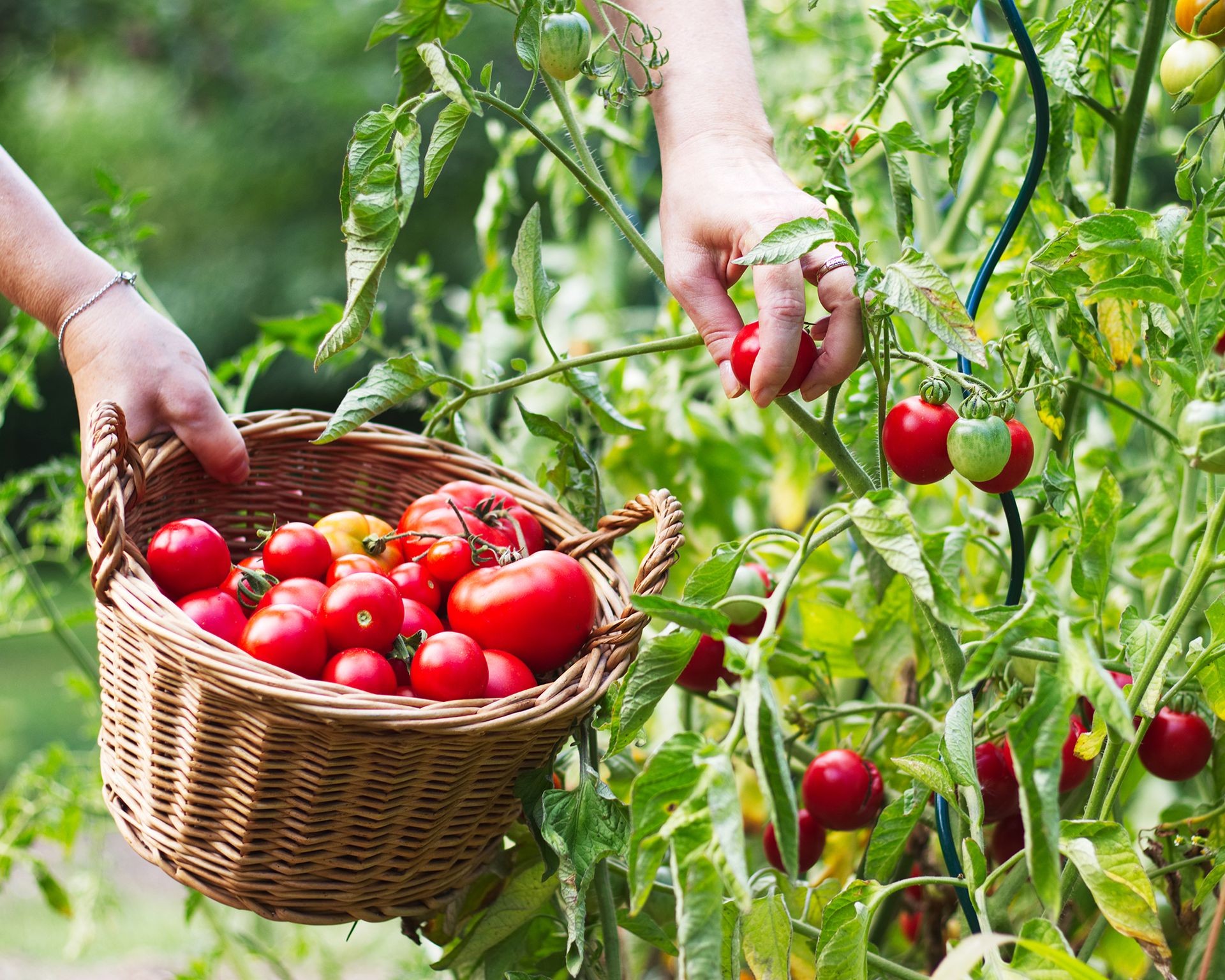 Hand gently plucking a perfectly ripe red tomato from the vine, illustrating the satisfaction of harvesting homegrown produce
Hand gently plucking a perfectly ripe red tomato from the vine, illustrating the satisfaction of harvesting homegrown produce
Growing delicious tomatoes is a rewarding process that connects you directly to your food. From selecting the perfect variety and enriching your soil with homemade compost to providing consistent care and timing your harvest just right, every step contributes to the final burst of flavor. These simple yet effective practices, honed through years of experience in both the garden and the kitchen, can help you achieve a bountiful harvest of tomatoes that are truly a taste of summer sunshine. Embrace the journey of growing your own – you might be surprised at the culinary delights waiting just outside your door.



